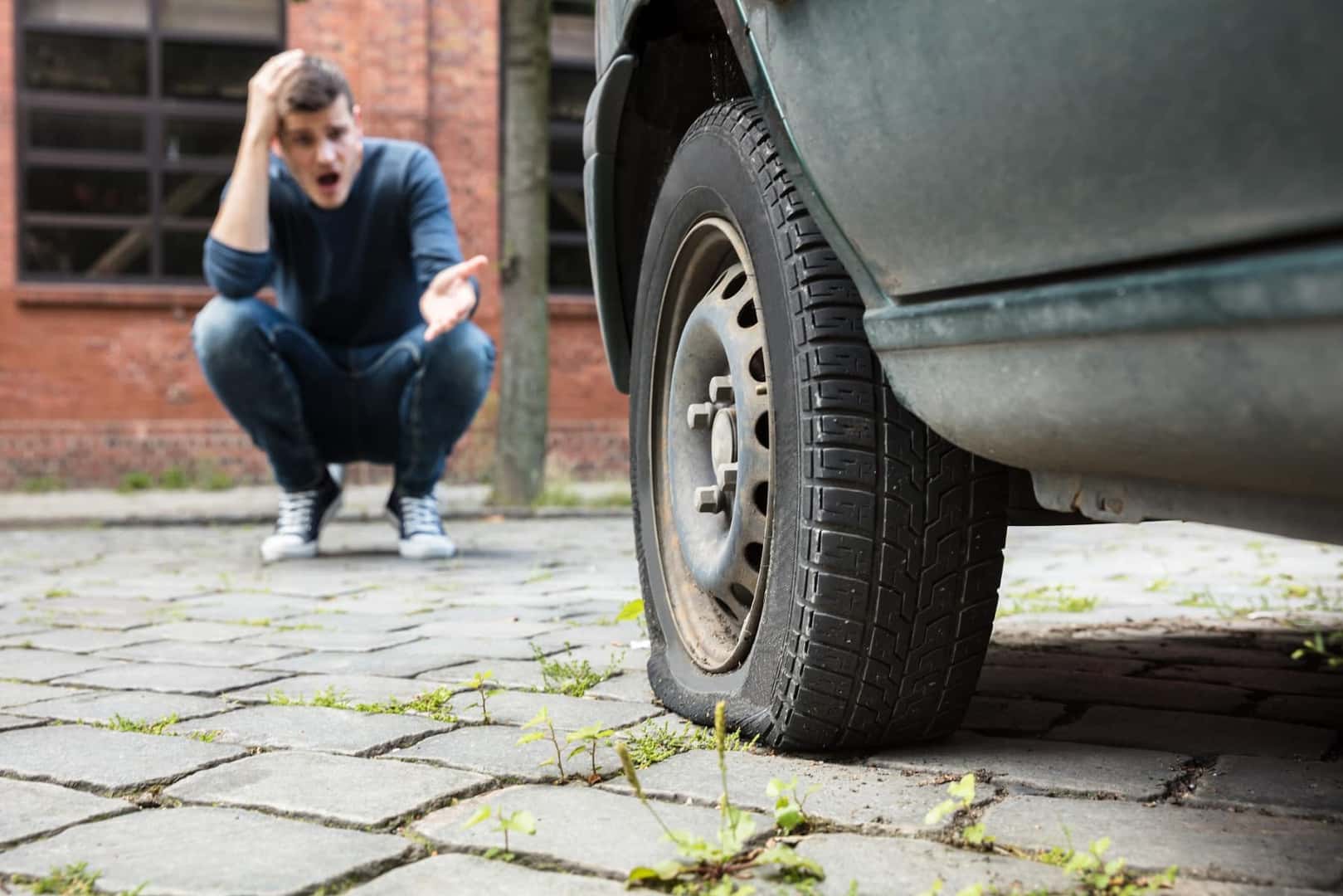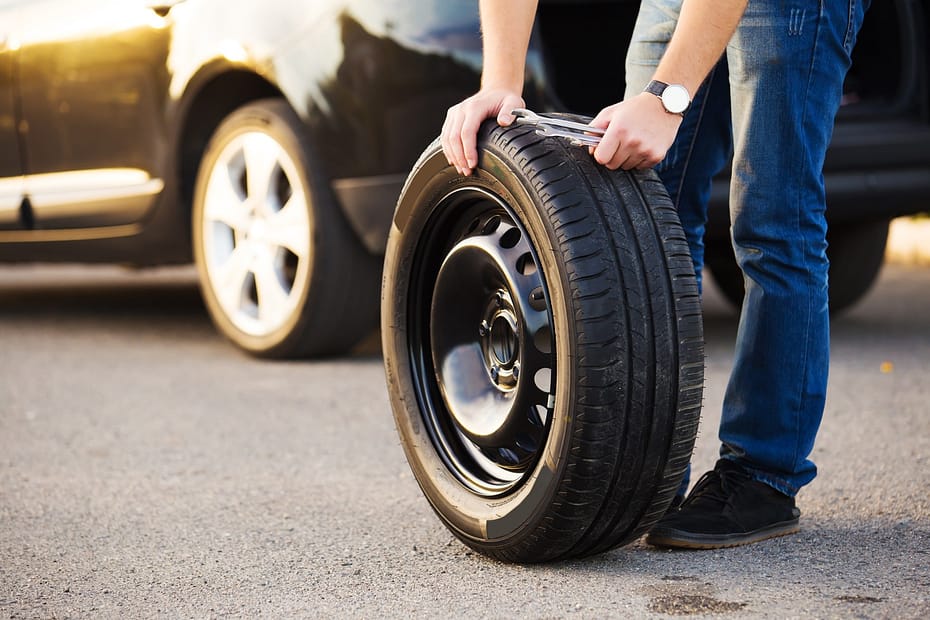You can drive on a flat tire for only a short distance, usually no more than 1-2 miles, before causing irreparable damage. Continuing to drive on a flat tire can severely damage the wheel and rim, resulting in costly repairs.
Driving on a flat tire is not only dangerous but also detrimental to the vehicle’s mechanical components. It risks causing irreparable damage to the wheel, axle, and suspension. Additionally, driving on a flat tire can also result in loss of control and potential accidents.
Therefore, in the event of a flat tire, it’s crucial to pull over to a safe location as soon as possible and either replace the tire with a spare or seek professional assistance. Ignoring a flat tire and attempting to drive on it for an extended period is not only unsafe but also harmful to the vehicle.

Credit: www.vikingmotors.ca
Factors Affecting Driving On A Flat Tire
HTML Format:When facing the unfortunate situation of a flat tire, it is natural to wonder how long you can continue driving with it. The answer to this question depends on several factors that both impact your safety and the condition of your vehicle. Understanding these factors will help you make informed decisions in such situations. Here, we will explore two essential factors affecting driving on a flat tire: tire type and size, and driving speed.
Tire Type And Size
Your tire type and size play a crucial role in determining how long you can drive on a flat tire. It is important to know that not all tires are created equal. The type and size of your tire affect its structural strength and durability. Generally, larger tires with a sturdier build can withstand the stress of driving on a flat tire for a longer period compared to smaller, thinner tires.
Driving Speed
Driving speed is another significant factor impacting how long you can continue driving on a flat tire. As a general rule, the slower you drive, the safer it is to continue driving with a flat tire. High speeds generate more heat and friction, putting additional stress on the damaged tire. By reducing your driving speed, you can minimize these effects and potentially delay the need for immediate tire replacement.
Moreover, driving at lower speeds allows you more control over your vehicle, making it easier to handle any potential loss of control caused by the flat tire. Remember, safety should always be your top priority when driving with a flat tire.

Credit: blog.leithtoyota.com
Potential Risks Of Driving On A Flat Tire
Driving on a flat tire poses a series of potential risks that can compromise your safety and the condition of your vehicle. It’s important to be aware of these risks to make an informed decision when encountering a flat tire situation. Ignoring the warning signs and driving on a flat tire can result in severe consequences, leading to expensive repairs and endangering your well-being.
Damage To The Wheel Rim
Continuing to drive on a flat tire can cause significant damage to the wheel rim. When the tire lacks proper inflation, the rim comes into direct contact with the road surface, leading to abrasions and deformations. This can result in the need for costly repairs or even the replacement of the entire wheel rim, adding to the financial burden of neglecting a flat tire.
Loss Of Control
One of the most critical risks of driving on a flat tire is the loss of control over the vehicle. As the tire loses air pressure, the handling and stability of your car diminish, increasing the risk of accidents. Reduced traction and compromised steering response make it challenging to maneuver the vehicle, posing a danger to both the driver and other road users. The potential for a loss of control on a flat tire emphasizes the importance of addressing the issue promptly.
Tips For Driving Safely With A Flat Tire
When experiencing a flat tire while driving, it’s crucial to handle the situation safely. With the right approach, you can maintain control of your vehicle and prevent any potential accidents. Below are some essential tips for driving safely with a flat tire, helping you navigate the unexpected challenge on the road.
Reduce Speed Gradually
Reduce your speed gradually when you notice a flat tire, without abrupt or sudden changes. This approach allows for better control as you bring your vehicle’s speed to a safe and manageable level, minimizing the risk of losing control and maintaining stability on the road.
Avoid Unnecessary Maneuvers
Avoid making sudden maneuvers such as sharp turns, quick lane changes, or sudden braking. Smooth, gradual movements help minimize any loss of traction or stability, reducing the risk of further damage to the flat tire and ensuring the safety of you and your passengers.
Distance And Conditions
When driving with a flat tire, it is crucial to consider the distance you can safely travel and the impact of road conditions on your vehicle’s stability and performance. Understanding the limitations and conditions is essential to avoid further damage or accidents. Let’s explore these factors in more detail.
Distance Limitations
When it comes to driving on a flat tire, there is no one-size-fits-all answer to the maximum distance you can travel. The distance limit depends on various factors, such as:
- The type and size of your tire
- The weight of your vehicle
- The existing damage to the tire
Generally, expert advice suggests that you should drive no more than 50-70 miles with a flat tire. Driving beyond this distance can put additional strain on the tire, wheel, and other components of your vehicle.
If you exceed this distance, the chances of irreparable damage to your tire increases significantly, leaving you with no option but to replace it entirely. Moreover, prolonged driving on a flat tire can lead to unsafe handling, making it harder to control your vehicle and increasing the risk of accidents.
Impact Of Road Conditions
Road conditions play a vital role in determining how long you can drive on a flat tire. Here are some factors to consider:
- The surface of the road: Driving on smooth, paved roads can provide better traction and stability compared to rough, uneven surfaces.
- The speed you are traveling at: Higher speeds can generate more heat, which can cause further damage to your flat tire.
- The presence of obstacles: Sharp objects or debris on the road can exacerbate the damage to your tire and potentially cause a blowout.
It is important to note that driving on a flat tire for even a short distance can compromise the overall safety of your vehicle. The handling, braking, and stability will all be affected, increasing the likelihood of accidents or loss of control.
Therefore, it is always recommended to pull over safely as soon as you realize you have a flat tire and have it repaired or replaced by a professional tire service.
Proper Response To A Flat Tire
Experiencing a flat tire while driving can be stressful, but knowing the proper response can make a difference. Follow these steps to ensure your safety and get the help you need.
Pull Over Safely
When you notice a flat tire, slow down gradually and pull over to a safe location away from traffic. Avoid sudden movements to maintain control of your vehicle.
Call For Assistance
If you are unable to change the flat tire yourself, call for roadside assistance or a tow truck service. Provide your location and describe the issue for a quick response.

Credit: jacosuperiorproducts.com
Frequently Asked Questions On How Long Can You Drive On A Flat Tire
Can I Drive A Flat Tire 2 Miles?
Driving a flat tire for 2 miles is not recommended as it can cause damage to the wheel and rim.
How Long Can You Drive On A Flat Tire Before It’s Ruined?
Driving on a flat tire can cause permanent damage. It is recommended to stop immediately and replace the tire. Continuing to drive can result in further harm to the tire and potentially lead to a dangerous situation on the road.
Can I Drive A Short Distance On A Flat Tire?
Driving on a flat tire, even for a short distance, can cause damage to the wheel and affect control. It’s best to pull over safely and assess the situation. Avoid driving on a flat tire if possible.
Is It Bad To Drive On A Completely Flat Tire?
Driving on a completely flat tire is bad as it can damage the wheel and cause loss of control. It’s unsafe and can lead to costly repairs. It’s best to pull over and change the tire immediately.
Conclusion
Driving on a flat tire is not only unsafe but can also cause further damage to your car. It is crucial to address a flat tire immediately to prevent any accidents or complications on the road. Ignoring the issue and attempting to continue driving on a flat tire can lead to irreversible damage to the wheel, suspension, and other components.
Always prioritize your safety and have a professional inspect and repair your tire as soon as possible.
